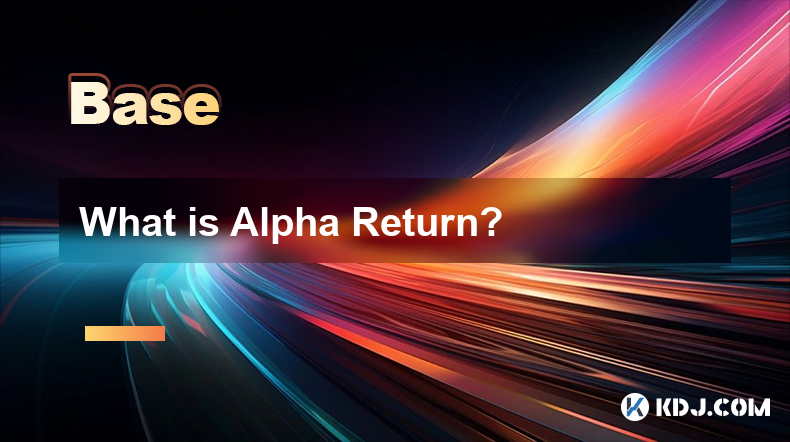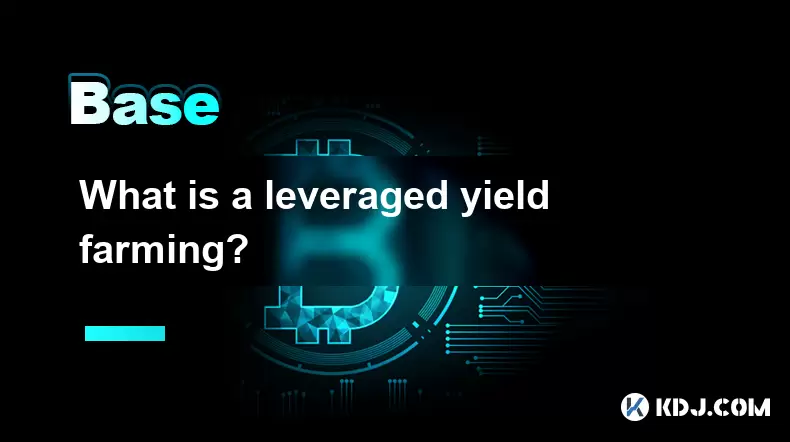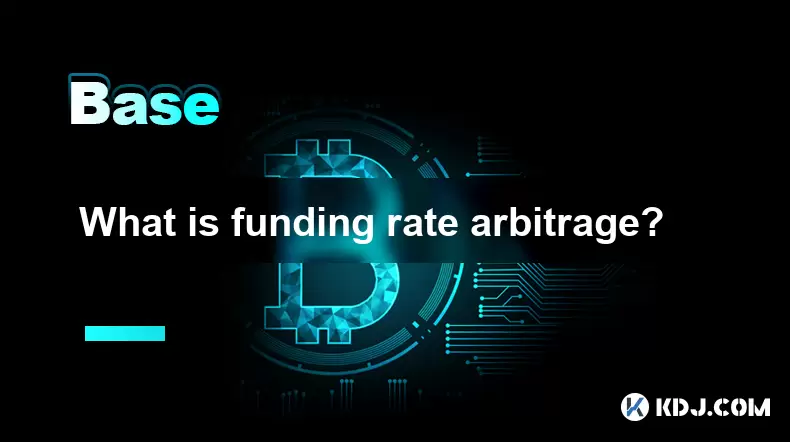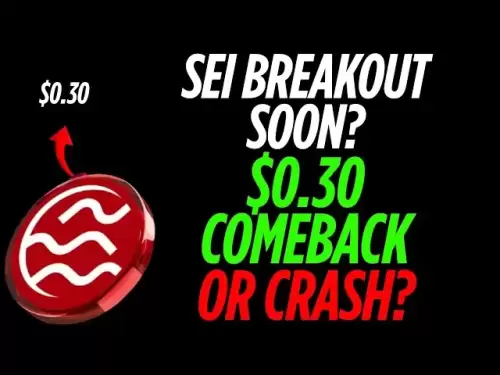-
 Bitcoin
Bitcoin $109,583.2239
0.19% -
 Ethereum
Ethereum $2,583.4612
0.48% -
 Tether USDt
Tether USDt $1.0003
-0.04% -
 XRP
XRP $2.2681
0.70% -
 BNB
BNB $659.9218
-0.52% -
 Solana
Solana $151.4961
-0.37% -
 USDC
USDC $0.9999
-0.02% -
 TRON
TRON $0.2861
1.20% -
 Dogecoin
Dogecoin $0.1718
0.04% -
 Cardano
Cardano $0.5960
-0.07% -
 Hyperliquid
Hyperliquid $40.1233
2.85% -
 Sui
Sui $2.9974
2.48% -
 Bitcoin Cash
Bitcoin Cash $497.1279
-1.76% -
 Chainlink
Chainlink $13.7275
-0.22% -
 UNUS SED LEO
UNUS SED LEO $9.0241
0.70% -
 Avalanche
Avalanche $18.5536
-0.88% -
 Stellar
Stellar $0.2421
1.39% -
 Toncoin
Toncoin $2.8593
-0.51% -
 Shiba Inu
Shiba Inu $0.0...01187
-0.07% -
 Litecoin
Litecoin $90.0023
2.90% -
 Hedera
Hedera $0.1590
2.79% -
 Monero
Monero $322.1495
0.00% -
 Polkadot
Polkadot $3.5453
-1.00% -
 Dai
Dai $1.0000
-0.01% -
 Bitget Token
Bitget Token $4.5733
-1.06% -
 Ethena USDe
Ethena USDe $1.0002
-0.01% -
 Uniswap
Uniswap $7.6345
3.03% -
 Aave
Aave $279.2583
0.47% -
 Pepe
Pepe $0.0...01003
-1.52% -
 Pi
Pi $0.4941
-0.32%
What is Alpha Return?
Alpha Return in crypto measures an investment's performance against a benchmark, like Bitcoin or a market index, indicating excess return.
Apr 07, 2025 at 10:28 pm

What is Alpha Return?
In the world of cryptocurrency, the term "Alpha Return" is often used to describe the performance of an investment relative to a benchmark. Specifically, alpha measures the excess return of an investment compared to the return of a market index or other relevant benchmark. In the context of cryptocurrencies, this could be compared to the performance of major cryptocurrencies like Bitcoin or Ethereum, or even a broader crypto market index.
Understanding Alpha in Cryptocurrency
Alpha is a key metric for investors looking to gauge the skill of a fund manager or the effectiveness of a trading strategy. A positive alpha indicates that the investment has outperformed the benchmark, while a negative alpha suggests underperformance. For example, if a cryptocurrency portfolio achieves a return of 15% over a period, and the benchmark (such as the S&P Cryptocurrency Broad Digital Market Index) returns 10%, the alpha of the portfolio would be 5%.
Calculating Alpha Return
To calculate alpha, you need to know the return of the investment and the return of the benchmark. The formula for alpha is straightforward:
[ \text{Alpha} = \text{Return of Investment} - \text{Return of Benchmark} ]
For instance, if your crypto investment returns 20% and the benchmark returns 12%, the alpha would be calculated as follows:
[ \text{Alpha} = 20\% - 12\% = 8\% ]
This means your investment has an alpha of 8%, indicating it has outperformed the benchmark by 8 percentage points.
Factors Influencing Alpha in Cryptocurrency
Several factors can influence the alpha of a cryptocurrency investment. These include:
Market Volatility: Cryptocurrencies are known for their high volatility, which can lead to significant swings in returns. A strategy that can navigate this volatility effectively may generate higher alpha.
Trading Strategy: The approach to buying and selling cryptocurrencies can greatly impact alpha. Strategies such as arbitrage, trend following, or algorithmic trading can lead to different levels of alpha.
Fundamental Analysis: Understanding the underlying technology, team, and market potential of a cryptocurrency can help in selecting assets that may outperform the market.
Risk Management: Effective risk management can help in achieving higher alpha by minimizing losses during downturns.
Alpha vs. Beta in Cryptocurrency
While alpha measures the performance of an investment relative to a benchmark, beta measures the volatility of an investment relative to the market. A high beta indicates that the investment is more volatile than the market, while a low beta suggests less volatility. In the context of cryptocurrencies, understanding both alpha and beta can provide a more comprehensive view of an investment's performance and risk.
For example, a cryptocurrency with a high alpha and a high beta might offer significant returns but also come with increased risk. Conversely, a cryptocurrency with a low alpha and a low beta might provide more stable but lower returns.
Using Alpha to Evaluate Cryptocurrency Investments
Investors often use alpha to evaluate the performance of their cryptocurrency investments. By comparing the alpha of different investments, investors can identify which assets or strategies are generating the most excess return. This can be particularly useful in the diverse and often unpredictable world of cryptocurrencies.
For instance, if an investor is considering two different crypto funds, one with an alpha of 3% and another with an alpha of 7%, the fund with the higher alpha would be more attractive, assuming similar levels of risk.
Practical Example of Alpha in Cryptocurrency
Let's consider a practical example to illustrate how alpha works in the cryptocurrency market. Suppose an investor holds a portfolio of altcoins that returns 30% over a year, while the benchmark (a broad crypto market index) returns 20%. The alpha of the portfolio would be:
[ \text{Alpha} = 30\% - 20\% = 10\% ]
This indicates that the altcoin portfolio has outperformed the broader market by 10 percentage points. This positive alpha suggests that the investor's strategy of selecting and managing altcoins has been successful.
Limitations of Alpha in Cryptocurrency
While alpha is a useful metric, it has its limitations, especially in the cryptocurrency market. Alpha does not account for risk, and a high alpha might be accompanied by high risk. Additionally, the choice of benchmark can significantly affect the calculated alpha. In the fast-moving world of cryptocurrencies, selecting an appropriate benchmark can be challenging.
Moreover, alpha is a historical measure and does not guarantee future performance. Past alpha does not predict future alpha, and investors should be cautious about relying solely on this metric when making investment decisions.
Frequently Asked Questions
Q1: Can alpha be negative, and what does it mean in the context of cryptocurrency?
A1: Yes, alpha can be negative. In the context of cryptocurrency, a negative alpha means that the investment has underperformed the chosen benchmark. For example, if a crypto portfolio returns 5% while the benchmark returns 10%, the alpha would be -5%, indicating underperformance.
Q2: How often should I calculate alpha for my cryptocurrency investments?
A2: The frequency of calculating alpha depends on your investment strategy and goals. Some investors calculate alpha monthly or quarterly to monitor performance, while others may do it annually. It's important to choose a frequency that aligns with your investment horizon and review process.
Q3: Is alpha the only metric I should consider when evaluating cryptocurrency investments?
A3: No, alpha is just one of many metrics to consider. Other important metrics include beta (volatility), Sharpe ratio (risk-adjusted return), and drawdown (peak-to-trough decline). A comprehensive evaluation should take into account multiple factors to get a full picture of an investment's performance and risk.
Q4: Can I use alpha to compare different types of cryptocurrencies, such as Bitcoin and altcoins?
A4: Yes, you can use alpha to compare different types of cryptocurrencies, but it's important to choose an appropriate benchmark. For example, if you want to compare Bitcoin to altcoins, you might use Bitcoin as the benchmark for altcoins. However, if you're comparing altcoins to each other, a broader altcoin index might be more suitable.
Disclaimer:info@kdj.com
The information provided is not trading advice. kdj.com does not assume any responsibility for any investments made based on the information provided in this article. Cryptocurrencies are highly volatile and it is highly recommended that you invest with caution after thorough research!
If you believe that the content used on this website infringes your copyright, please contact us immediately (info@kdj.com) and we will delete it promptly.
- BONK Price Prediction: Meme Coin Mania and What's Next?
- 2025-07-04 12:30:13
- NYAG, Stablecoins, and FDIC Protections: Navigating the Regulatory Maze
- 2025-07-04 13:10:15
- Level Up Your DeFi Game: Phantom Wallet and the Ultimate DeFi Experience
- 2025-07-04 13:10:15
- Bitcoin Surge: Breaking Down the $109,000 Barrier and the Road to $165,000?
- 2025-07-04 12:30:13
- Solana ETF Inflows & Snorter Token: A New Era for Meme Coin Trading?
- 2025-07-04 12:50:12
- Ripple, Stablecoin, and First Bank: Decoding the Latest Moves in Crypto
- 2025-07-04 12:50:12
Related knowledge

What is a user-generated content (UGC) NFT platform?
Jul 04,2025 at 01:49pm
Understanding the Concept of a UGC NFT PlatformA user-generated content (UGC) NFT platform is a digital marketplace or ecosystem where users can create, mint, and trade non-fungible tokens (NFTs) that represent ownership of original digital content they produce. Unlike traditional NFT platforms where creators often include professional artists or develo...

What is a token generation event (TGE)?
Jul 04,2025 at 07:14am
Understanding the Basics of a Token Generation Event (TGE)A Token Generation Event (TGE) refers to the process through which a blockchain project creates and distributes its native tokens to investors, participants, or stakeholders. This event is often associated with new cryptocurrency projects launching on platforms like Ethereum, Binance Smart Chain,...

What is a block explorer API?
Jul 04,2025 at 05:07am
Understanding the Role of a Block Explorer APIA block explorer API is a crucial interface that enables developers and users to interact programmatically with blockchain data. Unlike traditional APIs used in web services, a block explorer API specifically provides access to blockchain-related information such as transaction details, wallet balances, bloc...

What is a leveraged yield farming?
Jul 04,2025 at 09:36am
Understanding Leveraged Yield FarmingLeveraged yield farming is a more advanced form of yield farming, which itself is a popular method in the decentralized finance (DeFi) ecosystem to earn returns by providing liquidity to various protocols. In traditional yield farming, users deposit tokens into a DeFi platform and earn rewards in return, often in the...

What is open interest in derivatives?
Jul 03,2025 at 02:49pm
Understanding Open Interest in DerivativesOpen interest is a critical metric used in the cryptocurrency derivatives market, particularly when analyzing futures and options contracts. It represents the total number of outstanding contracts that have not been settled or closed by either party involved. Unlike trading volume, which counts all trades made i...

What is funding rate arbitrage?
Jul 04,2025 at 11:43am
Understanding Funding Rate Arbitrage in the Cryptocurrency MarketFunding rate arbitrage is a trading strategy employed by crypto traders to exploit differences in funding rates across various perpetual futures exchanges. In perpetual contracts, funding rates are periodic payments made between long and short traders depending on whether the price of the ...

What is a user-generated content (UGC) NFT platform?
Jul 04,2025 at 01:49pm
Understanding the Concept of a UGC NFT PlatformA user-generated content (UGC) NFT platform is a digital marketplace or ecosystem where users can create, mint, and trade non-fungible tokens (NFTs) that represent ownership of original digital content they produce. Unlike traditional NFT platforms where creators often include professional artists or develo...

What is a token generation event (TGE)?
Jul 04,2025 at 07:14am
Understanding the Basics of a Token Generation Event (TGE)A Token Generation Event (TGE) refers to the process through which a blockchain project creates and distributes its native tokens to investors, participants, or stakeholders. This event is often associated with new cryptocurrency projects launching on platforms like Ethereum, Binance Smart Chain,...

What is a block explorer API?
Jul 04,2025 at 05:07am
Understanding the Role of a Block Explorer APIA block explorer API is a crucial interface that enables developers and users to interact programmatically with blockchain data. Unlike traditional APIs used in web services, a block explorer API specifically provides access to blockchain-related information such as transaction details, wallet balances, bloc...

What is a leveraged yield farming?
Jul 04,2025 at 09:36am
Understanding Leveraged Yield FarmingLeveraged yield farming is a more advanced form of yield farming, which itself is a popular method in the decentralized finance (DeFi) ecosystem to earn returns by providing liquidity to various protocols. In traditional yield farming, users deposit tokens into a DeFi platform and earn rewards in return, often in the...

What is open interest in derivatives?
Jul 03,2025 at 02:49pm
Understanding Open Interest in DerivativesOpen interest is a critical metric used in the cryptocurrency derivatives market, particularly when analyzing futures and options contracts. It represents the total number of outstanding contracts that have not been settled or closed by either party involved. Unlike trading volume, which counts all trades made i...

What is funding rate arbitrage?
Jul 04,2025 at 11:43am
Understanding Funding Rate Arbitrage in the Cryptocurrency MarketFunding rate arbitrage is a trading strategy employed by crypto traders to exploit differences in funding rates across various perpetual futures exchanges. In perpetual contracts, funding rates are periodic payments made between long and short traders depending on whether the price of the ...
See all articles

























































































